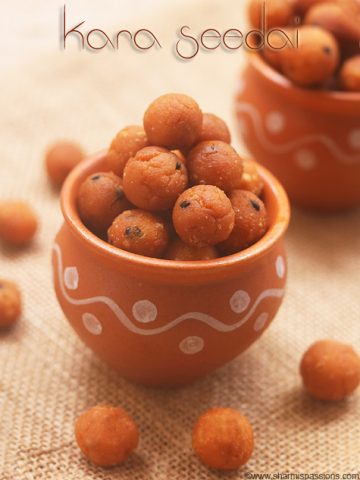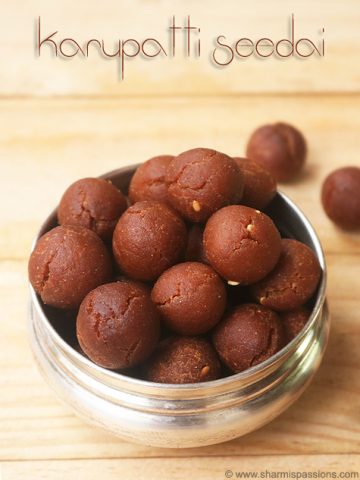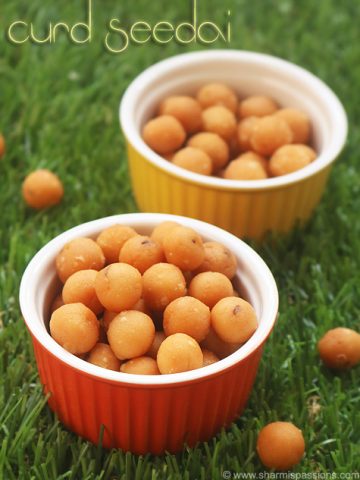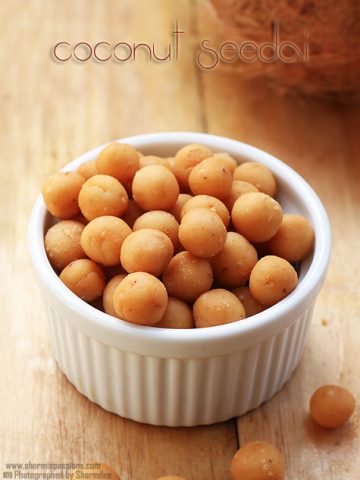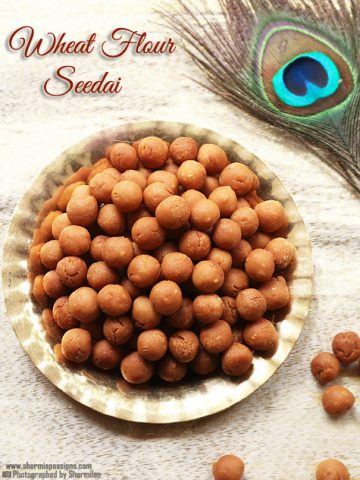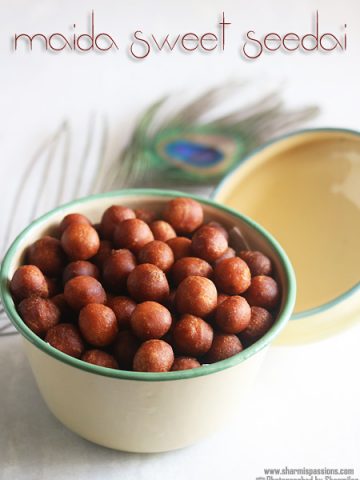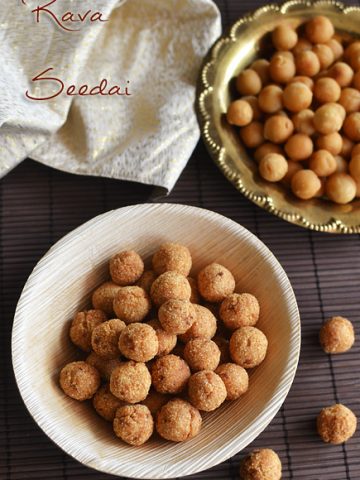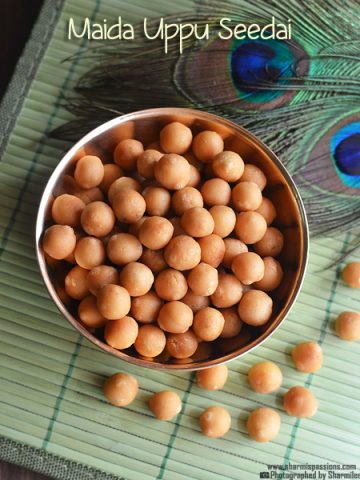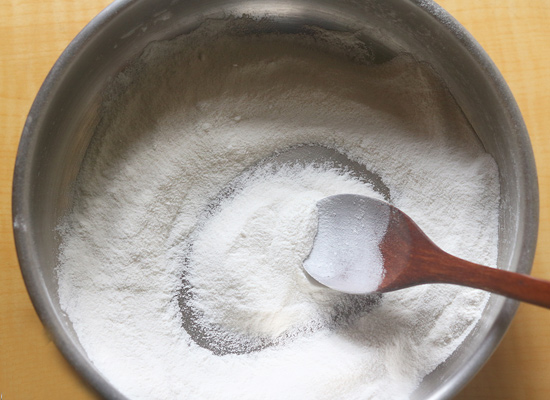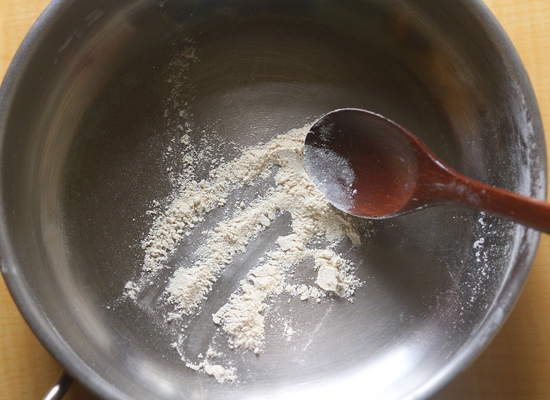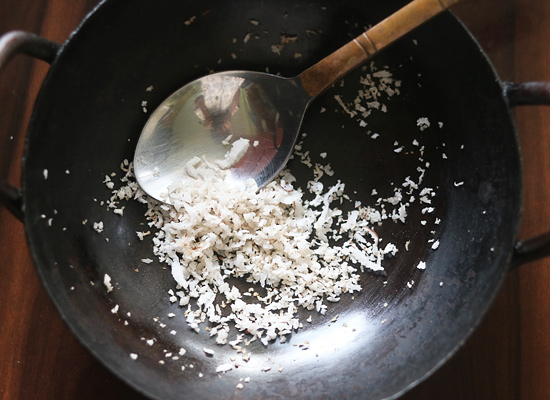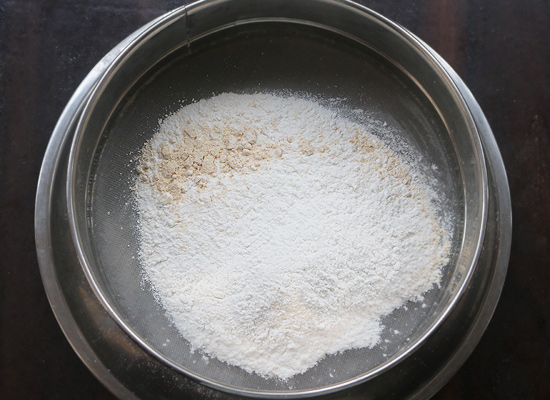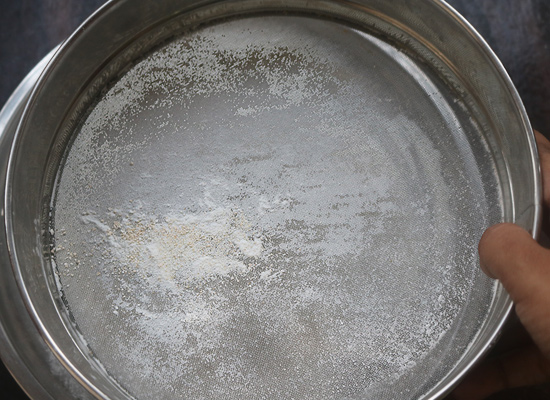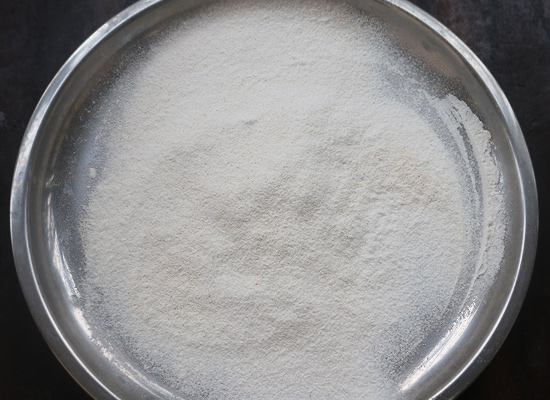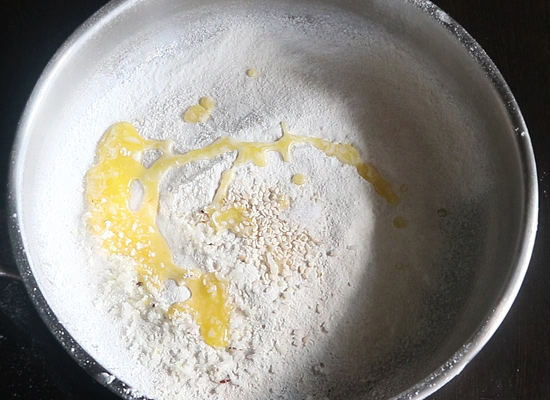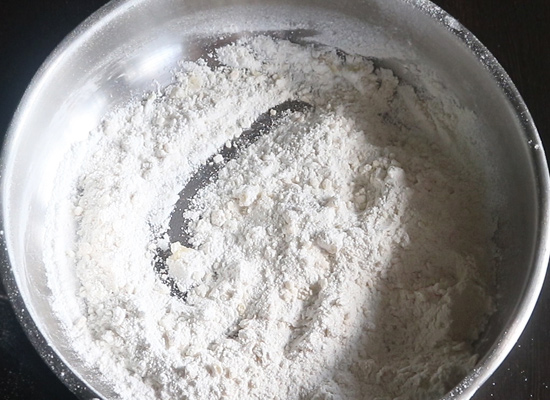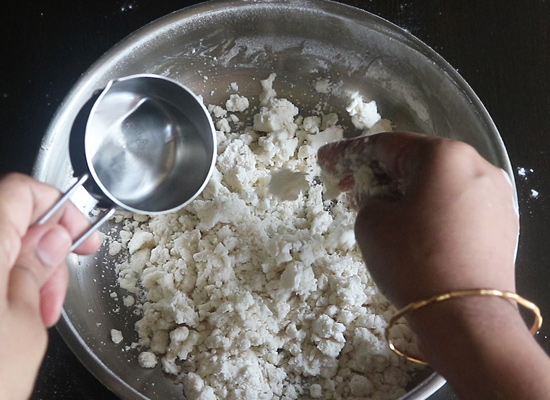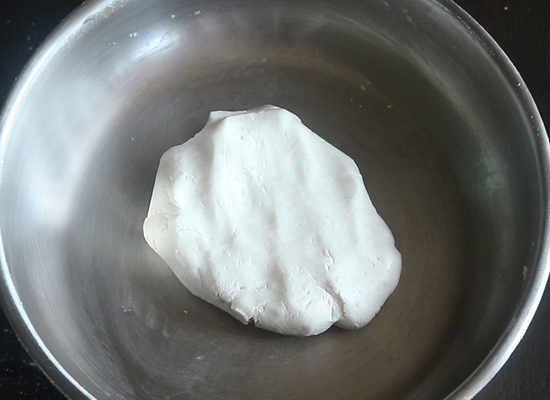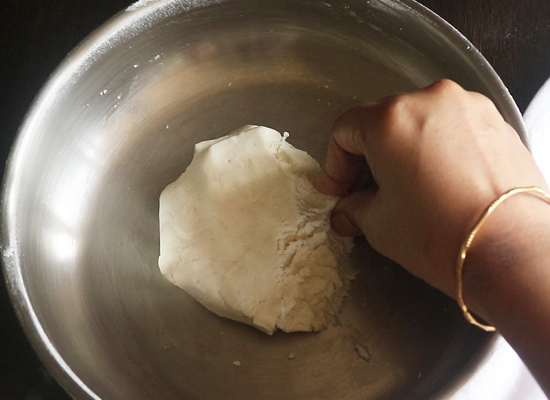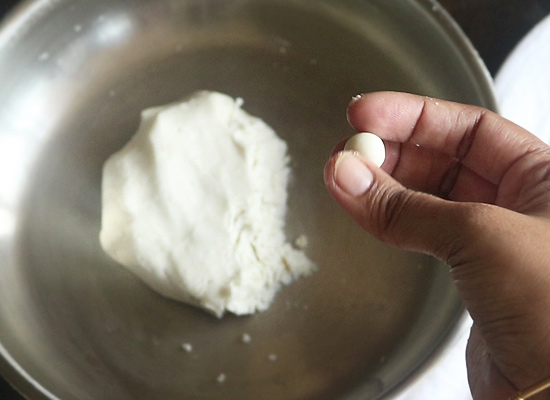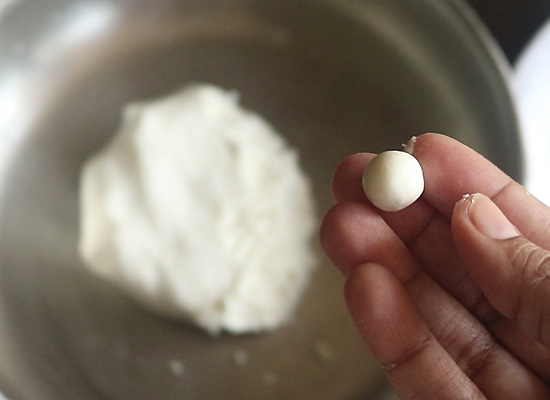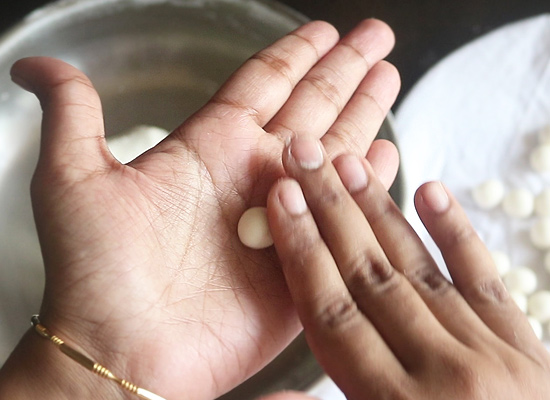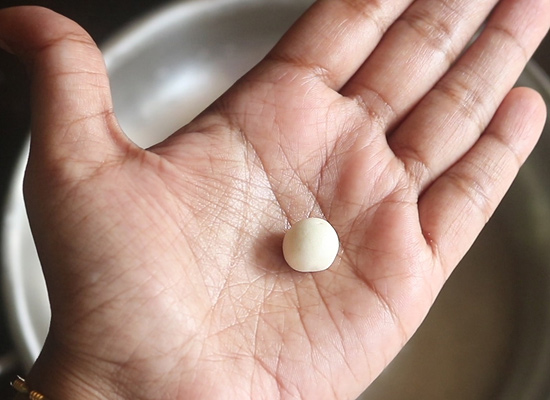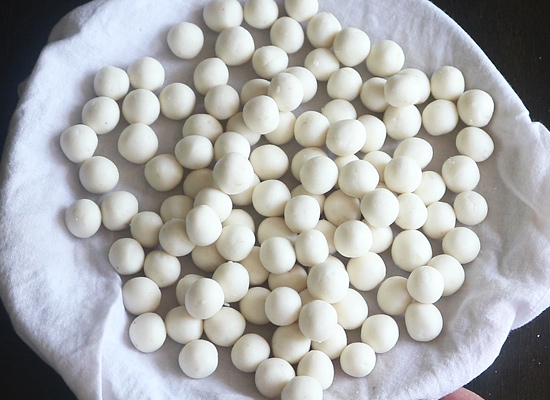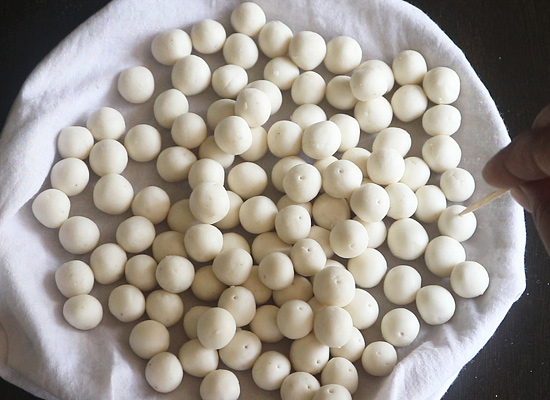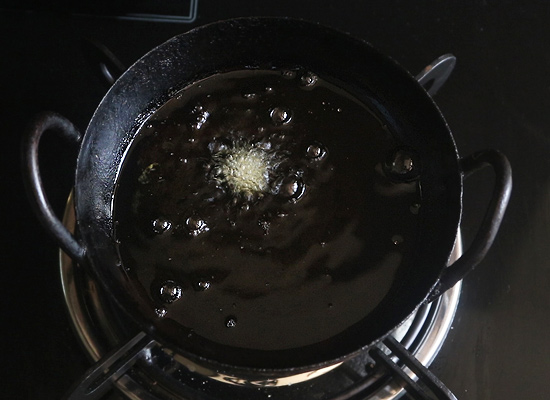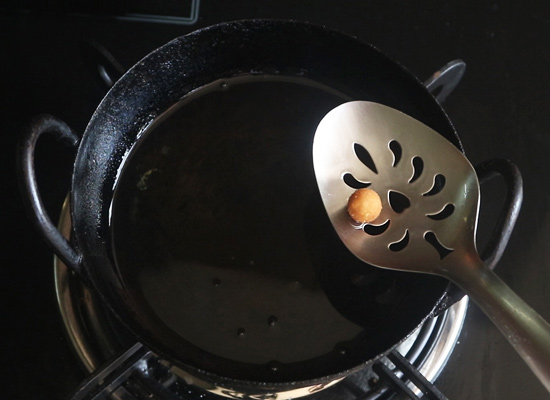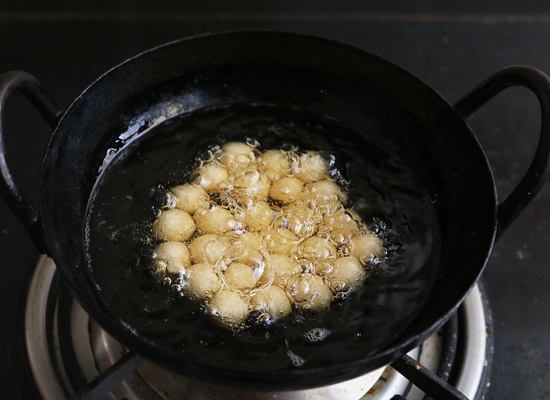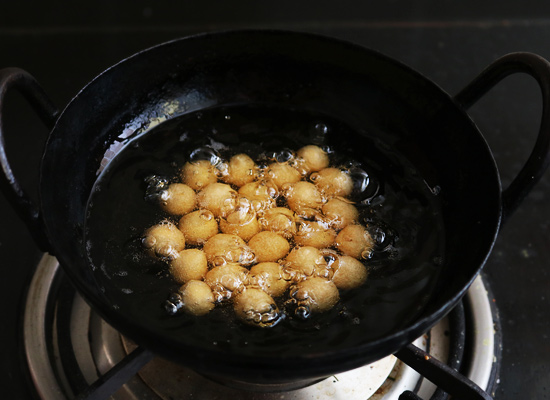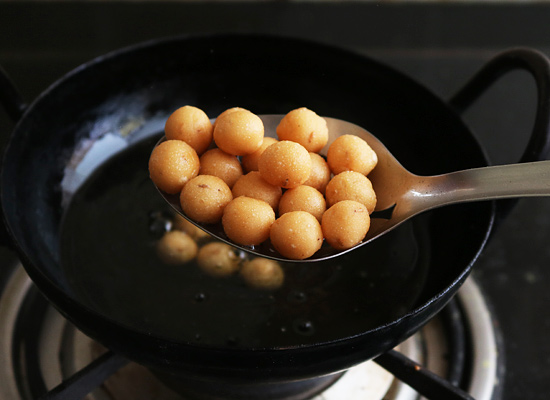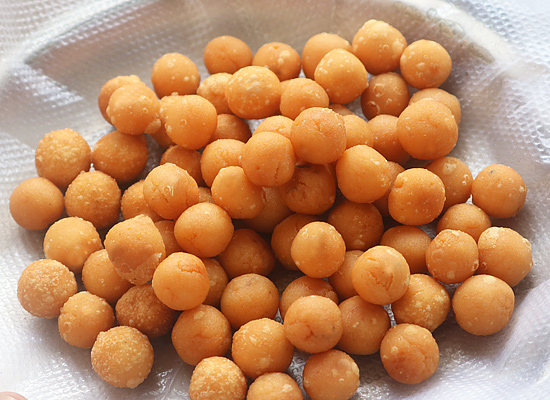Uppu Seedai is a crispy snack made for Gokulashtami or Krishna Jayanthi festival. Though we prepare other offerings like aval, butter and murukku for Krishna Jayanthi – Seedai is one of the integral part of Gokulashtami so don’t miss making and enjoying it.
About Uppu Seedai
Uppu Seedai also known as Uppu Cheedai is a crispy and crunchy snack made for Gokulashtami festival. Seedai in tamil is also called as Cheedai and is one important dish made for Krishnar Jayanthi from the Iyengar cuisine. Seedai is made using rice flour, urad dal flour as main ingredients along with sesame seeds, salt, butter and coconut. There are several variations to seedai but this Salt Seedai or Uppu Seedai is the classic version. Making of Seedai involves a bit of time and effort. Traditionally seedai is made from the scratch by making homemade flours which includes rice flour and urad dal flour then making seedai. However I have shared method to make seedai with store bought flour too. These days many don’t have the time to make the homemade flour from the scratch so you can make use of store bought flour. But make sure to roast and sieve that is the important step to avoid bursting of seedai.
Uppu Seedai Video
Similar Recipes
Gokulashtami Essentials Seedai Recipes Collection Gokulashtami Recipes Collection
Uppu Seedai Ingredients
Rice flour – You can either use homemade rice flour or store bought rice flour. Make sure it is roasted and sieved well and is fine. Urad dal flour – Whole urad dal dal without skin is roasted, grind to a fine powder, roasted and sieved. Urad dal flour is also available ready made in stores Butter – Butter is added to give a melt in the mouth texture to the seedai. Sesame Seeds – Sesame seeds are traditionally added to the dough while making seedai. But you can replace it with cumin seeds too. You can use black sesame seeds or white sesame seeds. Coconut – Coconut is optional if you do not want to add skip it but it gives a nice texture and flavor to the seedai.
Homemade flour vs Store bought flour
Homemade flour – Traditionally homemade rice flour and urad dal flour are used to make seedai. Soaking raw rice, then drying it for a while then grinding, sieving then again roasting and sieving is the best method for making homemade rice flour. You should be able to draw a line using the flour, after roasting this is the perfect way to check if the flour is ready. For making urad dal flour : We first roast urad dal until golden then grind it fine, sieve and roast again then finally store it. You can make the flours ready in advance then proceed making seedai. Store bought flour – Instant ready made flours are easily available these days in stores so you can use them too for making seedai. But make sure to roast well and sieve it once to ensure no speck is there then proceed.
Tips to make seedai and How to avoid seedai from bursting in oil
Moisture – The moisture or air trapped inside the balls will make the seedai burst so pricking with holes with a toothpick or any sharp object and resting it in a dry cloth for 30 minutes are the key to a perfect seedai. Also roasting coconut ensures there is no moisture in it also. Sieving – Whatever flour you use either homemade or store bought roasting and sieving is a must. Grinding – If the rice flour and urad dal flour are not grind and sieved well they will end up having small grains in between which will cause the seedai to burst. So make sure both the flours are sieved well and are very fine. Rolling – Do not roll the balls tight, do them as smooth and gentle as possible. If you roll it tight then air bubbles might get trapped inside making them to burst. Also don’t expect to get perfect rounds just pinch roll and allow it to rest. Drying – After the balls are made make sure to rest it in a cloth for a while for the extra moisture to leave. The wetness or moisture in the balls may lead to seedai bursting so always give it a good resting time.
But still make sure to be at a safe distance while frying the seedai especially if you are a beginner.
Seedai Recipes
How to make Seedai Step by Step
1.I used homemade flours that I made and stored – you can check the making in the recipe card. If using store bought flour also you need to roast it. Add 1 cup rice flour, roast until its easy to draw a continuous line as shown here, Set aside to cool. 2.Next roast 1 tablespoon urad dal flour for 2 minutes or until steam wafts from the flour. Set aside to cool. 3.Roast 1 tablespoon grated coconut until there is no moisture and becomes dry. No need to roast until golden. Set aside to cool. 4.To a sieve add roasted rice flour and urad dal flour. 5.Sieve well. Discard the remains. 6.Sieved flours ready. 7.Now add the sieved flours to a bowl along with 2 tablespoon melted butter, 1/2 tablespoon sesame seeds and roasted coconut. 8.Mix this well first to combine. 9.Then add water little by little to gather. 10.Gather to make a soft dough like shown below. It should not be sticky. 11.Pinch a tiny portion from the dough. 12.Roll it with your three fingers to make a smooth ball. Do not roll tight just roll roughly. 13.Do not worry about making it a perfect round shape. 14.Alternatively you can roll it using your palms too. In case if it sticks you can apply little oil in your fingers and palm. 15.Mild cracks are okay too while rolling as it helps in allowing moisture to dry up through the gap. 16.Repeat to finish, add the shaped balls on a dry cloth. 17.Prick the balls using a tooth pick just one prick for each ball.This step is optional but I recommend it strongly as it ensures no bursting seedai. 18.First test by adding one ball. 19.Once it is fried well without any busting you can proceed with the rest in batches. 20.Add few balls at a time. 21.Roll over and fry until golden. 22.Strain oil, remove using a perforated ladle. Now repeat with other batches and finish. 23. Uppu seedai is ready. Store in a clean dry airtight container. Keeps well even for a month.
Expert Tips
Make sure to sieve the flours.Add the remaining coarse flour to the next batch grind it then sieve repeat this process. Sieving the flours is a must and it will avoid 80% of bursting and the rest 20% is how you roll it. If you have your flour smooth and very fine then your seedais will be smooth else it will be slightly coarse textured. You can use butter at room temperature or melt the butter as I did. You can even give the flour to mill and grind it if you are doing in bulk. Pricking step is optional. I did it randomly when I tried it for the first time but now the have updated the pics and now I didn’t do this but still it was perfect. Make sure both the flours are sieved well before use. Roll the balls very smooth but gently not tight so that no splits are shown outside. Do not attempt to make bigger balls, for proper cooking inside make small balls a slightly bigger than peas. If you feel your coconut is moist then dry roast in tawa for few mins and then add it. I added it raw only. You can even add 1/2 teaspoon cumin seeds along with sesame seeds. If your flame is high then your seedais will not cook evenly and will have brown shades here and there, the browning and cooking will not be even. If you get small bubbles and if your seedai is looking dry on the outside then butter is not enough, so measure and follow the quantity as mentioned above.
Storing & Serving Suggestion
Seedai can be served as a snack with evening tea or coffee. Store in an airtight container to retain freshness. Need not refrigerate. Keeps well for about a week.
1.Why is my seedai bursting?
The moisture or air trapped inside the balls will make the seedai burst so pricking with holes with a toothpick or any sharp object and resting it in a dry cloth for 30 minutes are the tips to avoid bursting. Also while rolling do not roll tight, it is ok to have mild cracks in the seedai which will help the moisture to leave using that gap.
2.Why is my seedai not crisp?
Before adding the seedai make sure oil is hot enough to fry. Oil should be at the right temperature not smoky hot or not too low. Frying the seedai in correct oil temperature is the key to get perfect crispy seedais. You can first check by dropping one in oil, if it rises immediately then your oil is ready. If it browns immediately then oil is too hot, so you should lower flame then proceed frying.
3.Seedai drinks lot of oil. Why?
This is also because of the oil temperature if its not hot enough and you add the seedai then it will drink more oil and become soggy not crisp. Also if the dough is loose then it may drink more oil. If you have any more questions about this Uppu Seedai Recipe do mail me at [email protected]. In addition, follow me on Instagram, Facebook, Pinterest, Youtube and Twitter . Tried this Uppu Seedai Recipe? Do let me know how you liked it. Also tag us on Instagram @sharmispassions and hash tag it on #sharmispassions.
📖 Recipe Card







